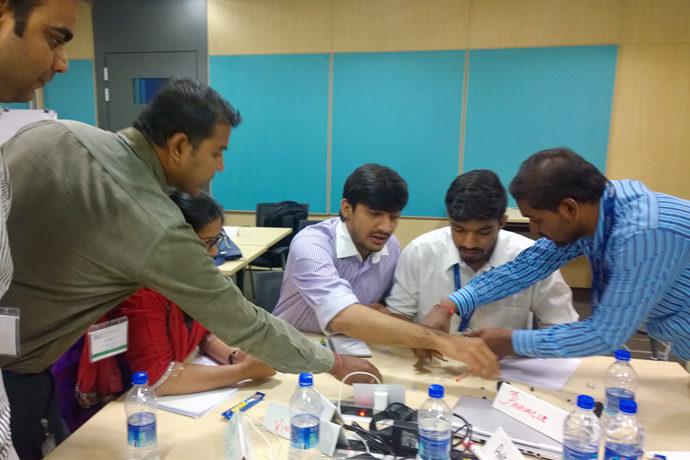Background Note –
Need –
1. Innovation is the need of the hour in a dynamic environment where uncertainty is a certainty. It may be the only distinguishing factor in favour of humans vs. artificial intelligence, at this point in time.
2. The Senior Management Team, who has experience of the business, needs to develop new products and processes, create new markets or adapt to existing ones much more rapidly than their predecessors had to.
3. Data for deciding the direction for innovation is available today, from many sources and whether intentionally and purposefully sought out or unintentionally bombarded with; however, much of the data may be uncategorized, difficult to draw meaning from, unfiltered, contradictory, inaccurate or even incorrect.
4. A tried and tested methodology of Thinking was required to use correct data, draw feasible assumptions and apply useful creativity to create or innovate products or services to add more value to organizations, their stakeholders and the world at large.
One such methodology is Design Thinking.
Intended Audience –
1. Senior Management who has to strategize marketing, product design, supply chain, operations or finance.
2. Focus Teams created for the purpose of looking for opportunities in the existing markets, new markets, new product selection or process re-engineering.
3. Any set of Stakeholders of the Organization who need to be sensitised in a cultural shift to structured innovative thinking.
4. Research & Development Team of any type of Organization.
5. UI / UX Designers and people who are involved with Customer Experience.
Pedagogy
1. A meeting with the Stakeholders to discuss the intended outcome of the Program.
2. Discussion with the Team, in part or whole, to discuss their perspective on the program.
3. Training Imparted using
- a. Theoretical Concepts and Strategies for each Stage
- b. Case Studies
- c. Videos
- d. Logical & Physical Experiments
- e. Hands-on Exercises
- i. Individual Exercises
- ii. Group Exercises
Program Structure –
1. Background
2. Stages of Design Thinking
- a. Empathize – Research methodologies
- b. Define – Group, Cluster and State the needs
- c. Ideate – Analytical, Creative and Critical thinking Applied to explore possible Solutions
- d. Prototype – Create Rapid Prototypes of the intended chosen Solution / s
- e. Test – Test whether and which solutions actually solve the customer problems
3. Organization Strategy around a Design Thinking Culture
- a. Box 1, Box 2 & Box 3 Ideas
- b. Resource Sharing for Box 3 Ideas
